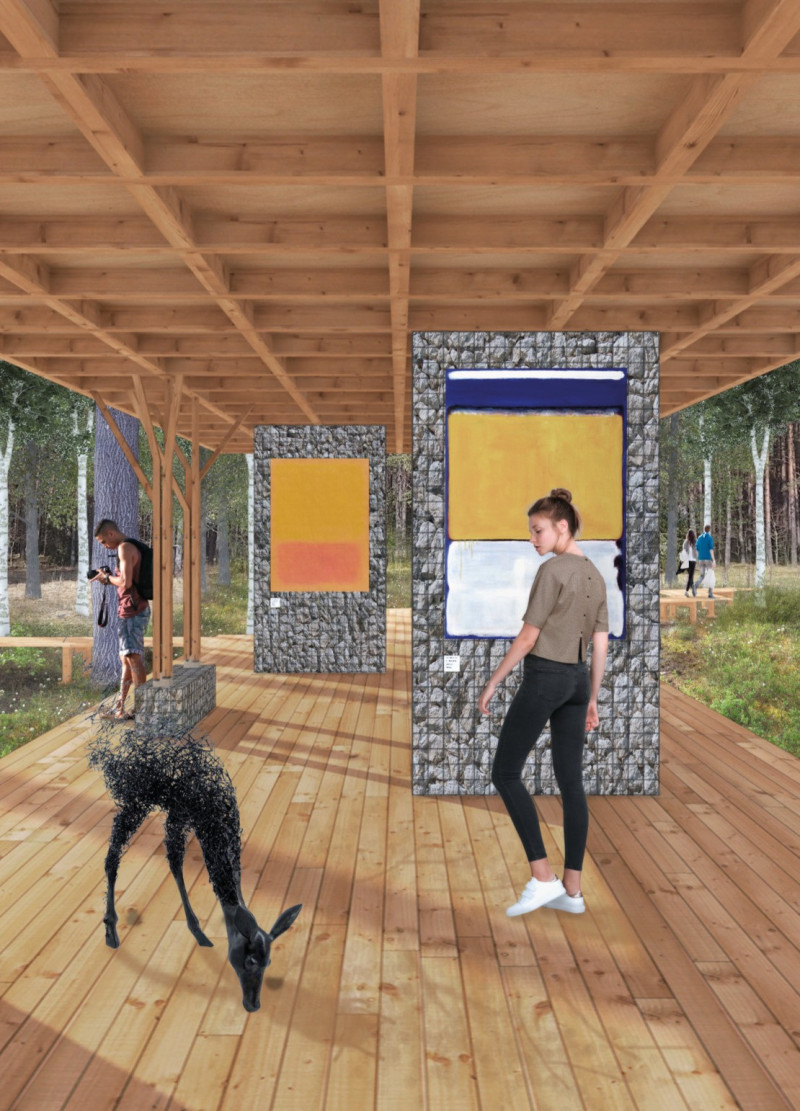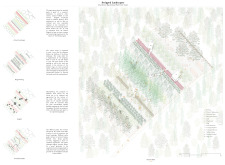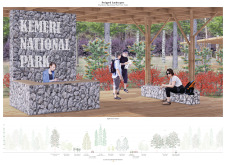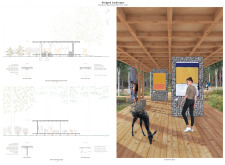5 key facts about this project
The Stripped Landscapes Visitor Center, located in Great Kemeri Bog National Park, focuses on connecting visitors to the surrounding natural environment. The center highlights the local biodiversity of the Kemeri region and encourages people to appreciate and engage with nature. The design approach centers on a linear organization that allows for clear divisions of space based on function and visitor experience.
Circulation and Navigation
Paths throughout the center are thoughtfully planned to guide visitors as they explore the area. These walking routes traverse varied landscapes, winding through lush vegetation and beneath the canopy of trees. This design encourages people to immerse themselves in the natural surroundings, allowing them to discover the intricacies of the ecosystem as they move.
Functional Zoning
Spaces within the center serve multiple purposes, arranged with careful attention to their functions. Practical areas like parking, ticket counters, and restrooms are placed near the entrance for easy access. In contrast, quieter spaces designed for relaxation, play, and reflection are positioned deeper within the site, providing a peaceful retreat from the busy areas.
Material Integration
While specific materials used in construction are not extensively detailed, the design incorporates natural materials sourced locally, such as gabion walls and pine wood. This choice enhances sustainability and ensures that the buildings blend with the landscape. By selecting materials that resonate with the environment, the design seeks to create a visual connection between the constructed and natural elements at play.
The design culminates in outdoor spaces that invite visitors to explore and engage. These areas create opportunities for interaction with the landscape from various viewpoints, enhancing the overall experience within the park. The combination of paths, functional areas, and natural materials leads to a refined environment where nature and architecture coexist harmoniously.






















































